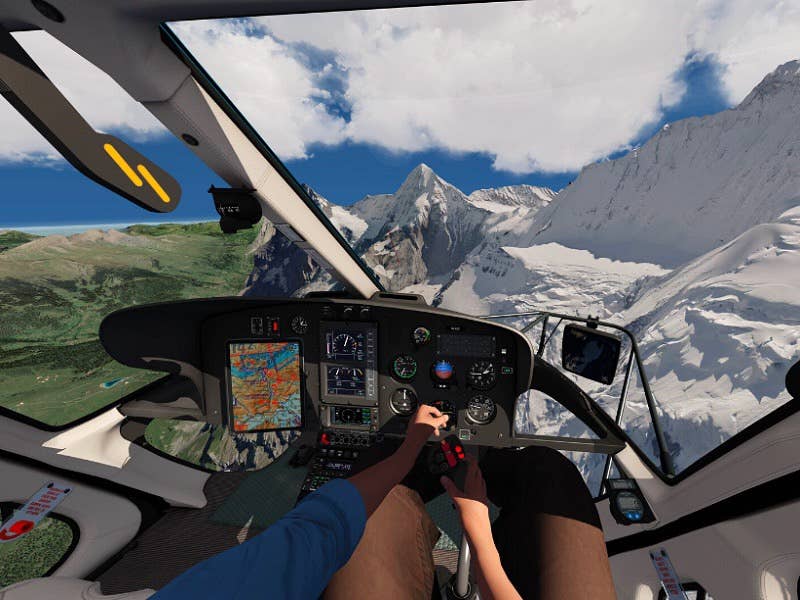U.S. Senate Has Until Early March to Finalize FAA Reauthorization Bill
The legislation offers a chance to improve flight training by increasing loggable simulator hours.

Now is the ideal time to modernize and update flight training in America. [Courtesy: Scott Firsing]
With the holidays over, the new countdown for Congress to finalize the FAA bill is on. The twice extended, nearly 800-page draft FAA reauthorization bill is due March 8.
The FAA bill initially passed the House in July, but the agency’s existing authorization has since been extended twice because of debates in the Senate ranging from aviation to global politics. December was a particularly chaotic time with senators using their valuable pre-holiday time to talk about border security and aid to Ukraine and Israel. They hoped to debate the list of FAA-related items over the past two weeks. However, the Boeing 737 Max 9 midair door plug incident and concerns over the FAA’s diversity and inclusion hiring plans have dominated the media and absorbed attention. Discussions around the FAA bill are now expected to take place in February.
The overall aim of the bill is to help improve aviation technologies and the workforce by improving FAA efficiency and operations, growing the aviation workforce, upholding America’s gold standard in safety, and encouraging aviation innovation. More specifically, there has been debate around several key issues, including raising the mandatory pilot retirement age from 65 to 67 and increasing the simulator hours a pilot can log as part of the 1,500 hours needed to become an airline transport pilot. In November, Senator John Thune (R-S.D) put forth a compromise proposal to increase loggable simulator hours from 100 to 150.
As part of the National Flight Training Alliance (NFTA), made up of American leaders in the pilot training space, I believe that good will come from raising the simulator hours.
The simulators of 2024 are not a 1990s DOS-run PC flight simulators with a joystick. The latest advanced simulators often contain an exact replica of a specific aircraft with the same avionics and controls you will find in a real airplane. This enables pilots to practice a whole range of skills, from teamwork and communication to aircraft systems and actual stick and rudder flying, if needed. Moreover, advancements in recent simulator technology, particularly in computer software and graphics, have pushed the immersion and data collection to a whole new level. The advanced data-driven training systems enable pilots and instructors to receive real-time insights and standardized evaluations for continuous pilot training improvement. This is important because efficient and economical performance evaluation is critical to the aviation industry.
These simulations promote the use of critical and evaluative thinking. Events in newer high-fidelity simulators enable students to enthusiastically contemplate the implications of a given scenario. This is vital, especially in recreating and practicing emergency procedures and scenarios, which you don’t want to do in the aircraft. Furthermore, scientific studies, including high-level, peer-reviewed journal articles on human factors, have shown that adding in unpredictability and variability into simulator training sessions improves pilot responses. It requires the pilot to apply the practiced skills and reinforces learning.
Another often overlooked benefit of simulators is teaching in one. The Roman philosopher Seneca said, "When we teach, we learn." Scientific studies have proven this is true—teaching a topic to your student helps the teacher learn. It’s known as the “protégé effect.” NFTA board members, who include FAA Part 141/161 flight school owners and their CFIs, can attest to this. Many of us view the flight time while teaching, especially in a simulator, as superior compared to other more uneventful and repetitious methods allowed for logging flight experience.
One can write a full-length book on this “flight training” topic, and if you did, it would be imperative to include the expertise and experience of the individuals involved in the day-to-day flight school world. This FAA bill shouldn’t be any different. It is these individuals who train the private pilots who eventually become commercial pilots who feed the airlines and other institutions. They know that time in an advanced flight simulator is highly beneficial to student pilots and instructors. They see raising the loggable simulator hours from 100 to 150 as a step in the right direction.
Overall, now is the ideal time to modernize and update flight training in America. The pilot shortage, combined with often outdated and inefficient regulations, makes it vital that the final version of the Securing Growth and Robust Leadership in American Aviation Act allows for innovation in aircraft simulation and education. Aviation is critical to our country’s national infrastructure. This bill will provide industry and FAA Administrator Michael Whitaker with guidance on the next five years—and beyond.

Subscribe to Our Newsletter
Get the latest FLYING stories delivered directly to your inbox






